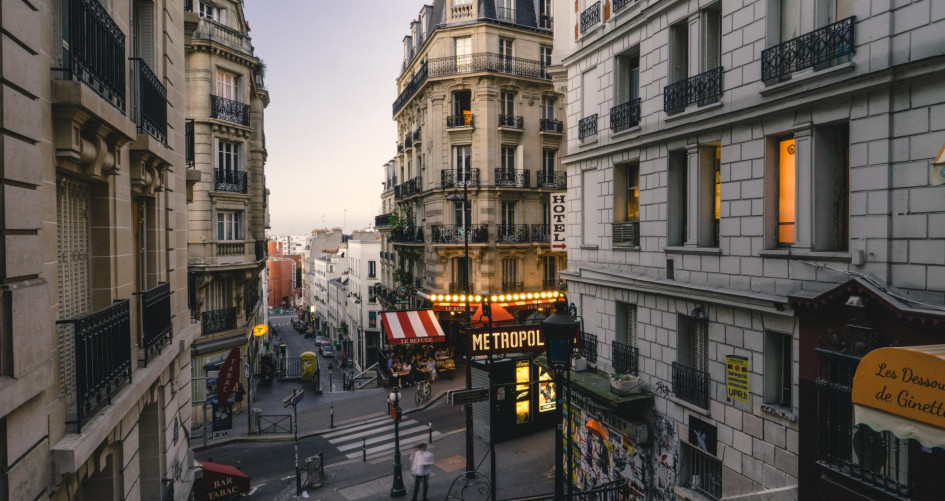With cities key to climate action, could a new concept of urban living help us reach the Paris Agreement targets?
The American author Jane Jacobs once wrote that “cities have the capability of providing something for everybody, only because, and only when, they are created by everybody.” It's a point that has more resonance now than ever, as we look to reimagine how we live in our cities, both as a result of the urgent need to take climate action, and the ongoing upheaval of the COVID-19 pandemic.
How we live is of course continually changing; once we lived transient lives before settling into villages, towns and then cities. In the 20th century, suburban living became popular, and the daily commute – and the emergence of central business districts – was born. However recent years have seen a growing awareness of how destructive (to our own mental health as well as the environment), a long daily commute can be. Indeed, all through the 20th century writers such as Jane Jacobs railed against the destructive influence of cars and urban sprawl. Gradually, things started to change, with Copenhagen the first European city to pedestrianize its main shopping street in 1961, an approach many other cities copied. As we moved towards the end of the 20th century, concerns rose over air pollution and more and more cities enhanced their public transport networks, and started building cycling lanes.
Post-COVID Living
The COVID-19 pandemic has reinforced this questioning of traditional ways of living, with many workers now used to working remotely, and at times, restricted to within a few kilometres of their homes due to public health measures. So can living differently change the way we think about our neighbourhoods and our cities, and ultimately help us reach the key Paris Agreement target, which is to reach the global average temperature rise to as close as possible to 1.5 degrees Celsius?
Enter the 15 Minute City, a concept developed by Professor Carlos Moreno at the Sorbonne in Paris. It is a relatively simple idea: where everything we need – workplaces, shops, parks, schools – should be within a fifteen-minute walk or cycle.
It would see the city become decentralized, which would result in less need for cars and the reimagining of public space to include less roads and more green space, bike lanes, and sports and leisure amenities. The idea of self-sufficient neighbourhoods is not new – before cars became omnipresent, most cities were laid out like this. However, given the urgency of the climate action we need, many cities are looking at ways to reduce emissions and improve residents’ quality of life.
Last April, Milan’s mayor, Giuseppe Scala announced he wanted to “rethink the rhythms” of the city, an apt description of the 15 Minute concept. A number of global mayors promoted the 15 Minute City in a report from the C40 Cities Climate Leadership Group published last summer. The report also reemphasized the need to “reallocate more road space to walking and cycling, investing in city-wide walking and cycling networks and green infrastructure.” It also highlighted the need to prioritize “nature-based solutions such as parks, green roofs, green walls, blue infrastructure and permeable pavements, to help reduce the risks of extreme heat, drought, and flooding, and improve liveability and physical and mental health.”
A Multi-Use Future
Paris, though, is leading the charge when it comes to the 15 Minute City; its mayor, Anne Hidalgo, appointed Moreno her ‘special envoy for smart cities’, and the city has made a number of decisions – from banning high polluting vehicles from entering the city at certain times to reserving the Seine’s quays for pedestrians and cyclists – to improve residents’ quality of life. Of course, the 15 Minute City is about more than just how we move around, but how we live day to day, such as how we use our buildings. As Moreno recently told the Financial Times: “One building with many applications throughout the day [is ideal]. How, for example, we could use a school for other activities during the weekend. We also want buildings that mix places for living and working at the same time, which reduces commuting time.”
Of course, it is much easier to reconfigure a city that was laid out in the pre-car era (most European cities) than cities that grew around the automobile (everywhere from Melbourne to Jakarta). Indeed many European capitals already have elements of a 15 Minute City in place. The British engineering firm, Arup, conducted a survey of 5,000 residents across five European capitals (London, Berlin, Paris, Milan, Madrid) in 2019, focused on the 15-Minute City concept. It asked respondents how long it took them to walk or cycle to essential amenities such as parks and shops. It took Milan and Madrid residents on average 13.1 minutes; Paris residents took 15.5 minutes; residents of Berlin took 16 minutes, while London residents faced a journey of 23.5 minutes.
While every city is different, so are the districts within a city, and some worry the emergence of a 15 Minute City will exacerbate existing divisions. If you live on the Upper East Side of Manhattan, what’s available within your 15-minute walk, will be very different to someone living in a Bronx housing project. It is vital then that city authorities ensure things like bike lanes and greening projects are spread equally throughout their city.
It is vital that in a post-pandemic world we ‘Recover Better’, and ensure that the rebuilding of our economies features green solutions – in our cities and everywhere else – that will not only spur growth, but safeguard our future on the planet.
